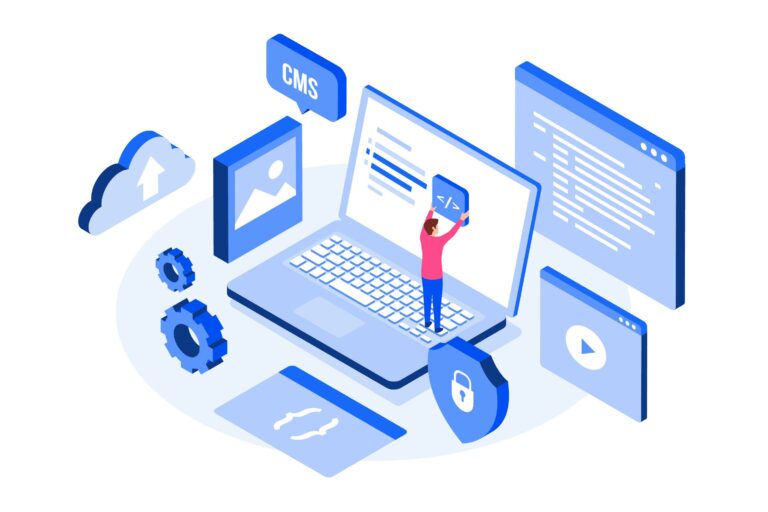AI and Cybersecurity: How AI Tools Can Help Protect Your Business
In this article, we delve into the intertwining worlds of Artificial Intelligence and cybersecurity, exploring how the fusion of these domains can bolster the defenses of businesses in the digital age. We cover key areas where AI tools can enhance cybersecurity measures, including early threat detection, predictive analysis, automated responses, reduction of false positives, and continuous monitoring. Along the way, we illuminate the current importance of AI in cybersecurity and look towards its future, painting a picture of an evolving landscape where AI plays a pivotal role in securing businesses against cyber threats.
I. Introduction
A. Defining AI and Cybersecurity
As we step further into the digital age, the terminology we use becomes increasingly intertwined with the technology that drives it. Among the most prominent buzzwords of this era are artificial intelligence (AI) and cybersecurity. AI, a field that involves the creation of intelligent machines capable of performing tasks typically requiring human intelligence, is progressively changing how we approach problem-solving and data analysis. On the other hand, cybersecurity, a practice designed to protect systems, networks, and data from digital attacks, has never been more crucial in an era where data is as valuable as gold.
B. The Importance of AI in Cybersecurity
In the complex and continually evolving landscape of cybersecurity, it has become increasingly clear that traditional defensive measures are no longer sufficient. As cyber threats become more sophisticated, the demand for advanced solutions grows. This is where AI comes into play. AI’s capacity to learn from experience, adjust to new inputs, and perform human-like tasks makes it an invaluable ally in fortifying cybersecurity. With AI, businesses can enhance their ability to predict, detect, and respond to cyber threats, thereby significantly improving their overall cybersecurity posture. This article will guide you through the vital role of AI in modern cybersecurity and how it can be a game-changer in protecting your business from cyber threats.
II. Early Detection of Threats
A. Understanding AI’s Role in Threat Detection
In a digital environment where threats are evolving at a swift pace, early detection becomes the linchpin in an effective cybersecurity strategy. The beauty of AI lies in its ability to sift through vast volumes of data at a speed and accuracy level that far surpasses human capabilities. This feature of AI allows it to identify patterns and anomalies that may signify a potential threat. Machine learning, a subset of AI, empowers systems to learn from data, identify patterns, and make decisions with minimal human intervention. Consequently, these systems can detect threats or unusual activities even in their nascent stages, thereby preventing potential cyberattacks from escalating.
B. Implementing AI for Early Threat Detection
Putting AI to work for early threat detection involves adopting the right tools and integrating them seamlessly into your existing cybersecurity framework. AI-based security tools can monitor network traffic, user behavior, and system vulnerabilities to spot potential threats. They continuously learn from the data they process, improving their ability to distinguish between normal activities and suspicious ones over time. The critical aspect of implementation is to ensure that the AI tools are properly trained to understand your specific business environment and requirements. This will help the system to more accurately identify what constitutes a threat in your particular context, resulting in a more robust and reliable line of defense.
III. Predictive Analysis
A. Exploring Predictive Analysis in Cybersecurity
As the name suggests, predictive analysis is about forecasting future outcomes based on historical data. It goes beyond simply reacting to security incidents to proactively identifying and addressing potential vulnerabilities before they can be exploited. In the realm of cybersecurity, predictive analysis can be instrumental in spotting patterns that suggest a likely future attack, giving companies the much-needed time to fortify their defenses. Predictive models can analyze a wide array of factors including user behavior, network activity, and known threats to create detailed threat landscapes and anticipate where an attack might come from.
B. How AI Enhances Predictive Analysis
AI and machine learning can dramatically enhance the accuracy and effectiveness of predictive analysis in cybersecurity. These technologies can digest and interpret vast amounts of data far more rapidly and efficiently than human analysts, identifying subtle patterns and correlations that might otherwise go unnoticed. For instance, an AI system can flag a user repeatedly attempting to access sensitive information as a potential insider threat, even if the user hasn’t yet managed to breach any systems. By learning from every interaction, AI can continuously refine its predictions, making them increasingly accurate over time. In essence, AI offers a way to stay one step ahead of the attackers, providing businesses with invaluable extra time to react and prepare.
IV. Automated Response
A. The Power of Automated Response in Cybersecurity
In the rapidly evolving world of cybersecurity, speed is of the essence. The longer it takes to respond to a threat, the greater the potential damage. That’s where automated response comes in. With this approach, systems can be programmed to take specific actions when certain types of threats are detected, reducing the response time to virtually zero. Automated response can include actions like blocking malicious IP addresses, isolating infected systems, or prompting users to change their passwords, to name just a few examples. By minimizing the window of opportunity for attackers, automated response can help to limit the impact of a security breach.
B. Role of AI in Facilitating Automated Responses
AI can supercharge automated response strategies by making them smarter, faster, and more adaptable. Machine learning algorithms can be trained to recognize the hallmarks of various types of cyber threats, triggering an automated response when these signs are detected. For example, if an AI system detects a sudden spike in network traffic from a specific IP address, it might automatically block that IP to prevent a potential DDoS attack. Furthermore, AI can learn from each incident, refining its threat detection and response capabilities over time. This allows the automated response system to become more effective with each threat it encounters, providing ever-improving protection against cyber attacks.
V. Reduced False Positives
A. Importance of Reducing False Positives in Cybersecurity
False positives, or benign activities mistakenly flagged as threats, can be a significant problem in cybersecurity. Not only can they lead to unnecessary alarm and wasted resources, but they also increase the risk that real threats might be overlooked amidst the noise. Cybersecurity teams are often inundated with alerts, many of which turn out to be false positives. This constant barrage can lead to ‘alert fatigue,’ where important warnings are missed or ignored because they’re lost in a sea of false alarms. Therefore, reducing false positives is a key objective for any effective cybersecurity strategy.
B. How AI Helps in Minimizing False Positives
AI has the potential to dramatically reduce the rate of false positives in cybersecurity. By leveraging machine learning algorithms, AI systems can learn to distinguish between normal and abnormal behavior more accurately than traditional rule-based systems. AI can analyze huge volumes of data in real time, identifying subtle patterns that might be missed by a human analyst. It can also adapt to changing patterns of behavior, reducing the likelihood that unusual but benign activities will trigger false alarms. By more accurately distinguishing between threats and non-threats, AI can help cybersecurity teams focus their attention where it’s needed most.
VI. Continuous Monitoring
A. The Need for Continuous Monitoring in Cybersecurity
In the dynamic and rapidly evolving world of cybersecurity, a static, one-time defense strategy simply isn’t enough. Threats can emerge and evolve at any time, and systems that were secure yesterday might not be secure today. To counteract this, businesses need to monitor their networks and systems continuously. Continuous monitoring enables an organization to detect new threats as they emerge and respond to them in real time. This proactive approach can significantly enhance an organization’s ability to defend itself against cyber attacks.
B. Leveraging AI for Continuous Cybersecurity Monitoring
AI can take the concept of continuous monitoring to a new level. By automating the process of data collection and analysis, AI can enable continuous, 24/7 monitoring on a scale that would be impossible for human teams. AI systems can monitor network traffic, user behavior, and system configurations in real time, detecting and flagging suspicious activities as they occur. They can also analyze vast amounts of historical data to identify patterns and trends that might indicate a developing threat. By providing ongoing, real-time insights into the state of an organization’s cybersecurity, AI offers a powerful tool for enhancing cybersecurity defenses.
VII. Conclusion
A. Recap and Key Takeaways
In our exploration of AI and cybersecurity, we have seen how AI tools can enhance our ability to detect threats early, employ predictive analysis to foresee potential risks, automate responses to identified threats, reduce the occurrence of false positives, and provide continuous monitoring of cyber environments. With these capabilities, AI brings a new level of efficiency, accuracy, and sophistication to cybersecurity strategies. The powerful combination of AI and cybersecurity promises to create a more secure digital world, one where businesses can operate with greater confidence and resilience.
B. Future of AI in Cybersecurity Protection
Looking to the future, the role of AI in cybersecurity is set to expand even further. We can expect to see more advanced AI algorithms capable of even deeper insights into threat prediction, more sophisticated automated responses, and finer-grained continuous monitoring. As AI continues to learn and evolve, it will play an increasingly critical role in helping businesses stay ahead of cyber threats. In this ever-changing landscape, embracing AI may well become a necessity rather than a choice, making it essential for businesses to understand and integrate AI tools into their cybersecurity strategies today.







